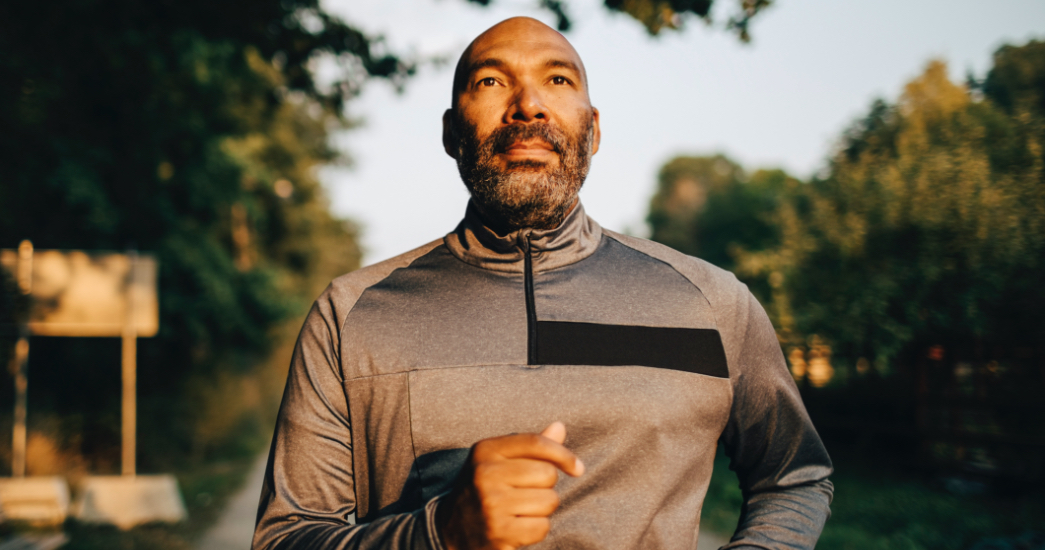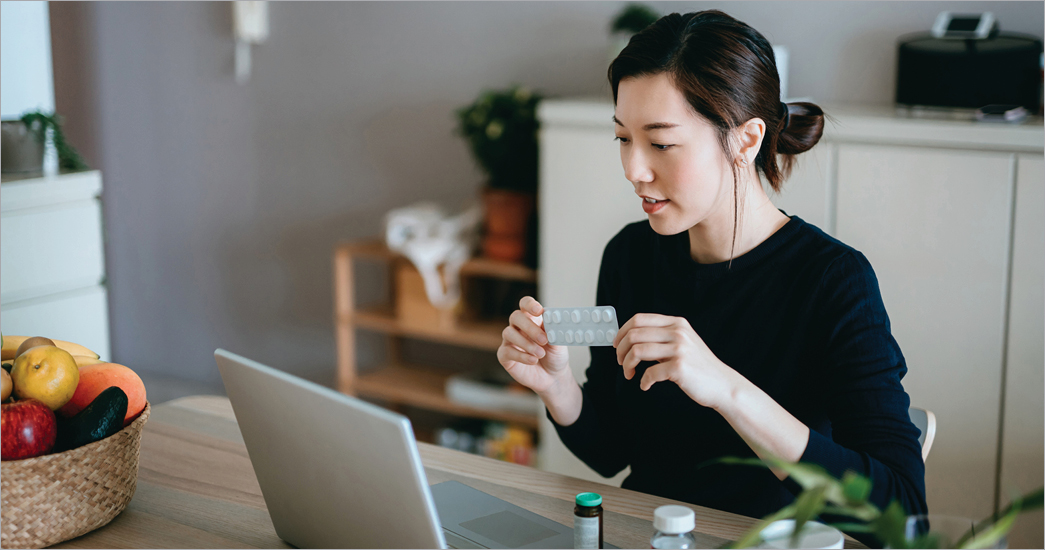
Published June 2021
With limited activities, disheveled routines and increased stress, the pandemic took a toll on both our physical and mental health. In a survey by the American Psychological Association (APA), 61% of respondents reported that they’ve experienced unwanted weight changes since the pandemic started with 42% saying they’ve gained more weight than they intended. The average weight gain across respondents? Twenty-nine pounds. So if you’ve experienced some unwelcome changes to your body after quarantine, know that you’re not alone.
The good news is that with proper planning and dedication, getting your health back on track is achievable. Here are some tips to help you develop habits for a healthier lifestyle and shed those extra quarantine layers. Just remember, the body you have today made it through a pandemic, so be kind to it as you make changes and work towards new goals.
 1. Start with a mental health check-in.
1. Start with a mental health check-in.
While the physical aspect of getting in shape is important, often overlooked is the fact that weight change, especially during an emotionally stressful time like the pandemic is directly connected to mental health. In the APA’s Stress in America study, individuals who reported quarantine weight gain also reported that they are drinking more to cope with stress and are getting insufficient sleep. As you create a plan for getting into physical shape, remember to check in on your mental health. Here are a few paths you can try to get started:
- Look into digital therapy tools. Moodfit, Headspace and MoodMission are some effective, low-cost digital support tools that help users self-manage their emotional well-being.
- Practice mindfulness. Mindfulness has been known to improve overall well-being, including reducing stress, anxiety and depression. Through Harvard Pilgrim’s Living Well at Home program, anyone can join a free mindfulness session.
- Consider talking to a professional. If you or a loved one is struggling with stress, anxiety or other emotional challenges, there are mental health professionals who can help. Check your insurance plan to find out what professional resources are available to you.
 2. Build physical activity into your routine.
2. Build physical activity into your routine.
In addition to helping you improve mobility, shed pounds and tone up, exercise can also help alleviate stress and improve sleep–both of which could be causes behind weight gain. For adults, at least 150 minutes of moderate-intensity aerobic activity per week is recommended with an incorporation of two days of muscle-strengthening activities. However, bear in mind that some movement is still better than no movement at all. If you’re just getting back into a fitness routine after a long hiatus, keep these tips in mind to stay motivated:
- Set realistic goals. Just like with New Year’s resolutions, it can be easy to let fitness goals fall to the wayside if you have too many or they seem out of reach. Choose a minimal amount to focus on and aim for goals you feel confident you can achieve.
- Take baby steps. If 150 minutes of exercise per week seems daunting, try aiming for 90 or 120 instead as you’re getting started. Once you develop a solid routine you can stick to, work your way up to that target goal.
- Find out what type of exercise you like. Working out can feel extra overwhelming if you’re doing something you hate. Try out different types of exercise and environments to find out which activity you enjoy the most. Through Harvard Pilgrim’s Living Well at Home program, you can experiment with Zumba, yoga and strength training classes for free.
In addition to regular workouts, there are some sneaky ways to incorporate more movement, and therefore more health benefits, into the healthy habits you already do during the week. This is especially helpful if your job is sedentary or you’re currently working from home.
- Keep your lunch break. Then use it to do a workout video from home, go for a walk, or pop into the gym for a 30 to 45-minute workout.
- Exercise at your desk. Keep light weights at your desk and do bicep curls or overhead extensions while catching up on emails.
- Add elbow grease to house cleaning efforts. Instead of trying to take less trips up and down the stairs for things like laundry, aim for more. Get in some calf raises as you do the dishes or incorporate squats and lunges while cooking dinner.
- Swap indoor hangouts for outdoor hangouts. On nice days, instead of catching up inside, go outside with family, roommate or friends for a walk, game or other physical activity.
 3. Tune into your eating habits.
3. Tune into your eating habits.
When it comes to getting into shape, what we put into our bodies plays a key role. However, like working out, changing how and what you eat requires goal setting and baby steps. For extra help and guidance, Harvard Pilgrim members can save on subscriptions to various weight management programs, meal plan services and digital apps. Try incorporating these habits into your routine to help you stay focused on a path to healthier eating:
- Cook meals at home. In addition to being the more cost-effective option, making your own food puts you in control of your meals, making it easier to set your portions and use healthier ingredients.
- Drink more water. Increasing your water intake can help you burn more calories and shrink your appetite. It can also take the place of sugary drinks, sodas and alcohol that work against your health goals.
- Keep healthy snacks on hand. If you tend to graze during the day or at night, instead of denying yourself a snack, keep nutritious, filling snacks on hand that are high in fiber and protein.
 4. Remember to incorporate self-love into the journey.
4. Remember to incorporate self-love into the journey.
While you’re taking steps towards developing healthy habits, remember to be kind to your body. Practicing body positivity can help cancel out the noise that often comes with the internet and social media, and improve self-confidence and self-image. Try following these tips to develop a more positive self-image, and feel genuinely good about the skin you’re in today:
- Keep a list of 10 things you love about yourself and who you are beyond your physical appearance.
- If you wouldn’t say it to a friend, don’t say it to yourself.
- Wear clothing that makes you feel good–donate what doesn’t.
- Shift time and energy spent critiquing yourself into doing something nice for a loved one.
- Remember that smaller doesn’t mean happier.
- Take time to appreciate all the wonderful things your body can do–laugh, breathe, hug, dance.
As you’re working towards improving your mental and physical health, bear in mind that taking on too many changes can be the reason health goals fail. Rather than take on all of these steps at once, zero in on your end goal and work towards one or two new healthy habits to start so you can stay focused and motivated on your journey.
To confirm eligibility for any programs or services mentioned in this article as it relates to your specific health plan, please reach out to your account executive or HR benefits team. You may also speak to our member services team at (888)-333-4742 or by sending a secure email. And for plan details and other member resources, log in to the member portal.


